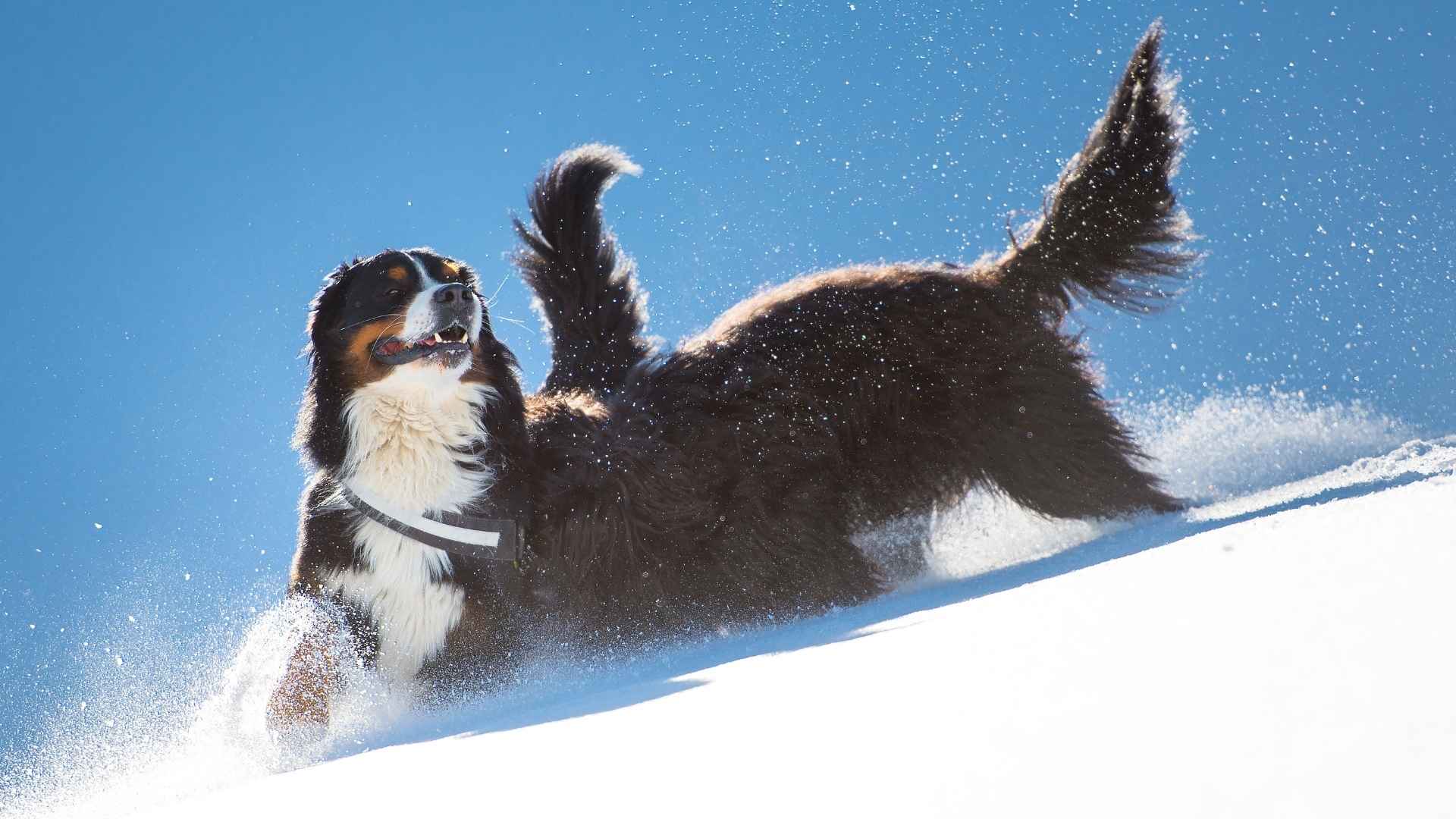Some dogs don’t just tolerate winter, they live for it. With snowflakes in the air and frost under their paws, certain breeds light up in the cold like it’s their natural playground. Bred in some of the world’s chilliest regions, these snow-loving dogs come equipped with thick coats, strong paws, and an adventurous spirit that thrives in icy conditions. Whether they were hauling sleds across the Arctic or guarding herds in snowy mountain ranges, these breeds were made for winter.
For those who enjoy frosty hikes, snowy backyards, or simply want a companion that’s just as excited about winter as you are, these dogs bring the energy, warmth, and resilience needed to embrace the cold. Here are seven incredible cold-weather dog breeds that truly thrive when the temperature drops.
Dog Breeds that Enjoy the Snow
1. Alaskan Malamute
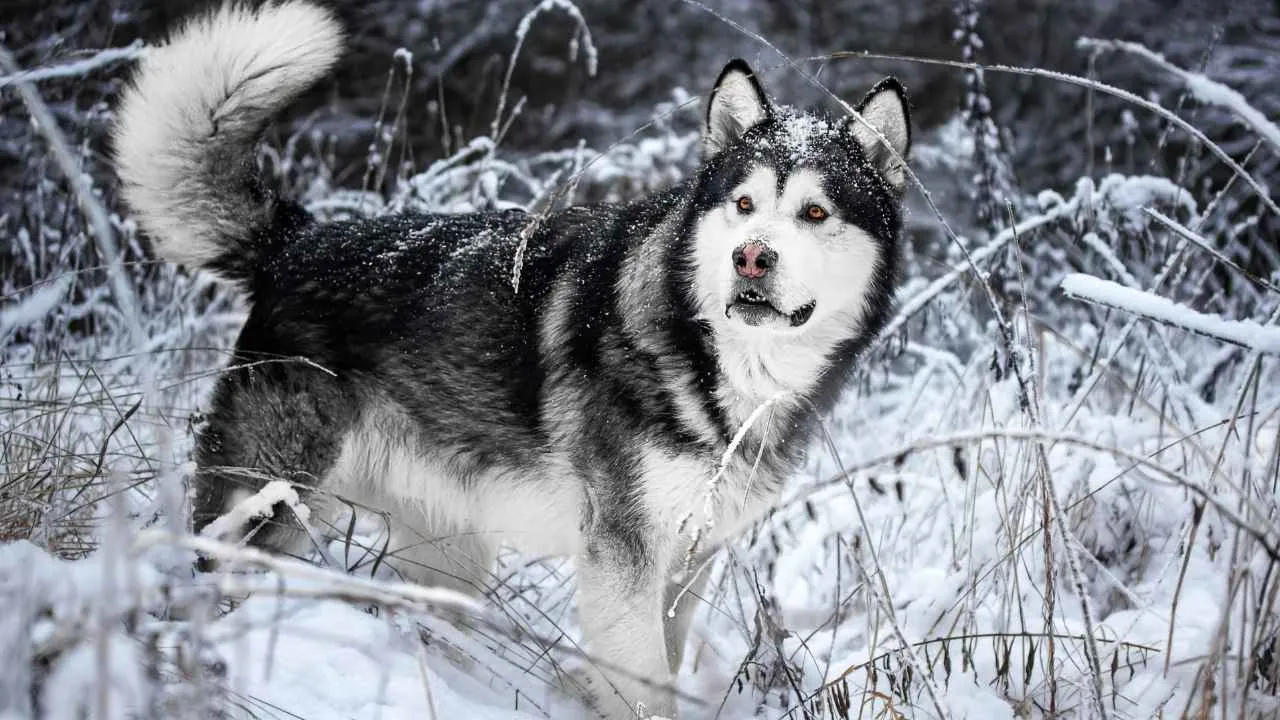
Breed Overview
Group: Working
Height: 24–27 in (males), 22–24 in (females)
Weight: 85 lbs (males), 75 lbs (females)
Coat: Dense double coat; white, gray, seal, red, or black
Temperament: Friendly, strong-willed, intelligent
Bred by the ancient Mahlemut tribe, the Alaskan Malamute is the heavyweight of Arctic sled dogs, built not for speed but for endurance and sheer pulling power. Their dense coat, plumed tail, and wolfish features speak to their heritage in snow-packed wildernesses.
While they may resemble the Siberian Husky, Malamutes are significantly larger and were developed to haul heavy loads over frozen terrain.
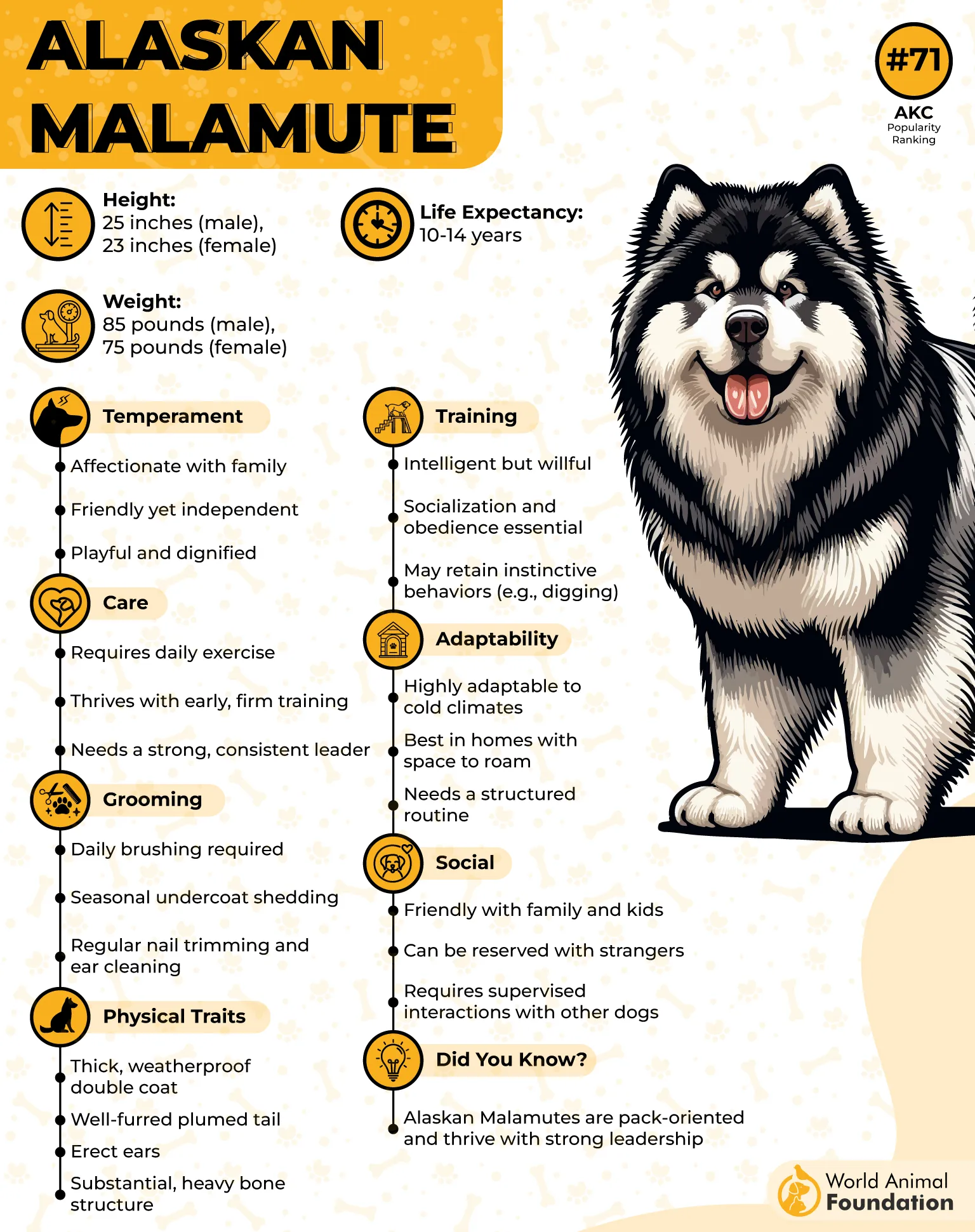
Don’t be fooled by their rugged looks; Malamutes are affectionate, social, and deeply bonded to their families. They love to talk with expressive howls and dramatic vocalizations, and their mischievous personalities keep life interesting.
According to the AKC, these popular dog breeds require both mental and physical outlets; without consistent stimulation, boredom may turn into digging sprees or great escapes.
They thrive in open spaces where they can run, pull, and explore. Daily exercise is a must, as is early training. These dogs are bright, but stubborn. Their snow-loving instincts also mean they’re happiest outside in cold climates, charging through drifts or napping in the frost.
Grooming can be a task, especially during seasonal coat-blowing, but their fur is surprisingly clean and odorless. Brushing a few times a week keeps their coat healthy and your furniture relatively fluff-free. Add in their loyalty, strength, and goofball energy, and you’ve got a winter-loving dog who’ll warm your heart on even the coldest day.
2. Great Pyrenees
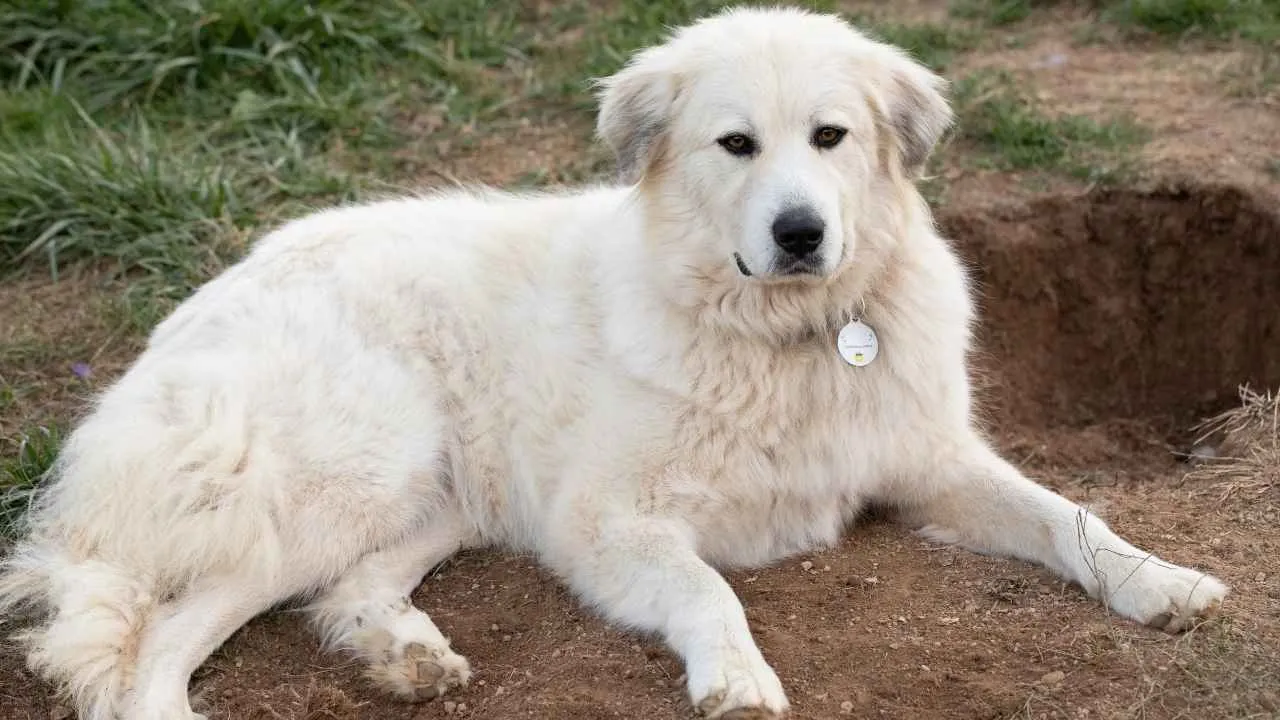
Breed Overview
Group: Working
Height: 25–32 in
Weight: 80–100+ lbs
Coat: Long, thick double coat; white or mostly white
Temperament: Calm, watchful, devoted
Once guardians of sheep in the snowy slopes of the Pyrenees Mountains, the Great Pyrenees has long been a symbol of strength, serenity, and unwavering loyalty. Bred to withstand bitter cold while keeping predators at bay, this majestic breed carries its heritage in its stoic demeanor and thick, weather-resistant coat.
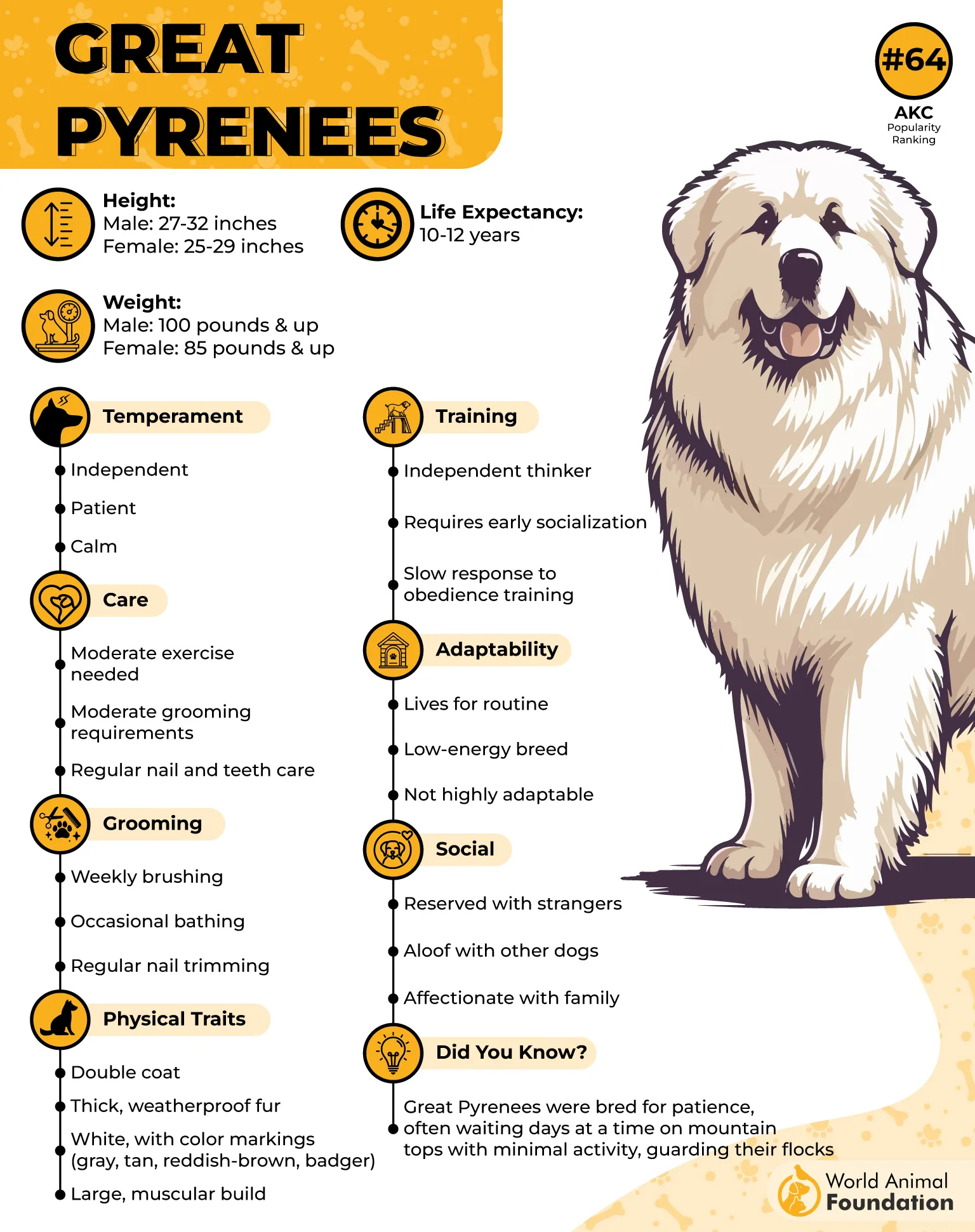
Despite their size and power, the Pyrenees are gentle giants. Their protective instincts remain intact, but they are known to be calm and affectionate with their human companions. They’re particularly patient with children and bond deeply with their families, making them excellent cold-weather housemates as long as you have space to accommodate them.
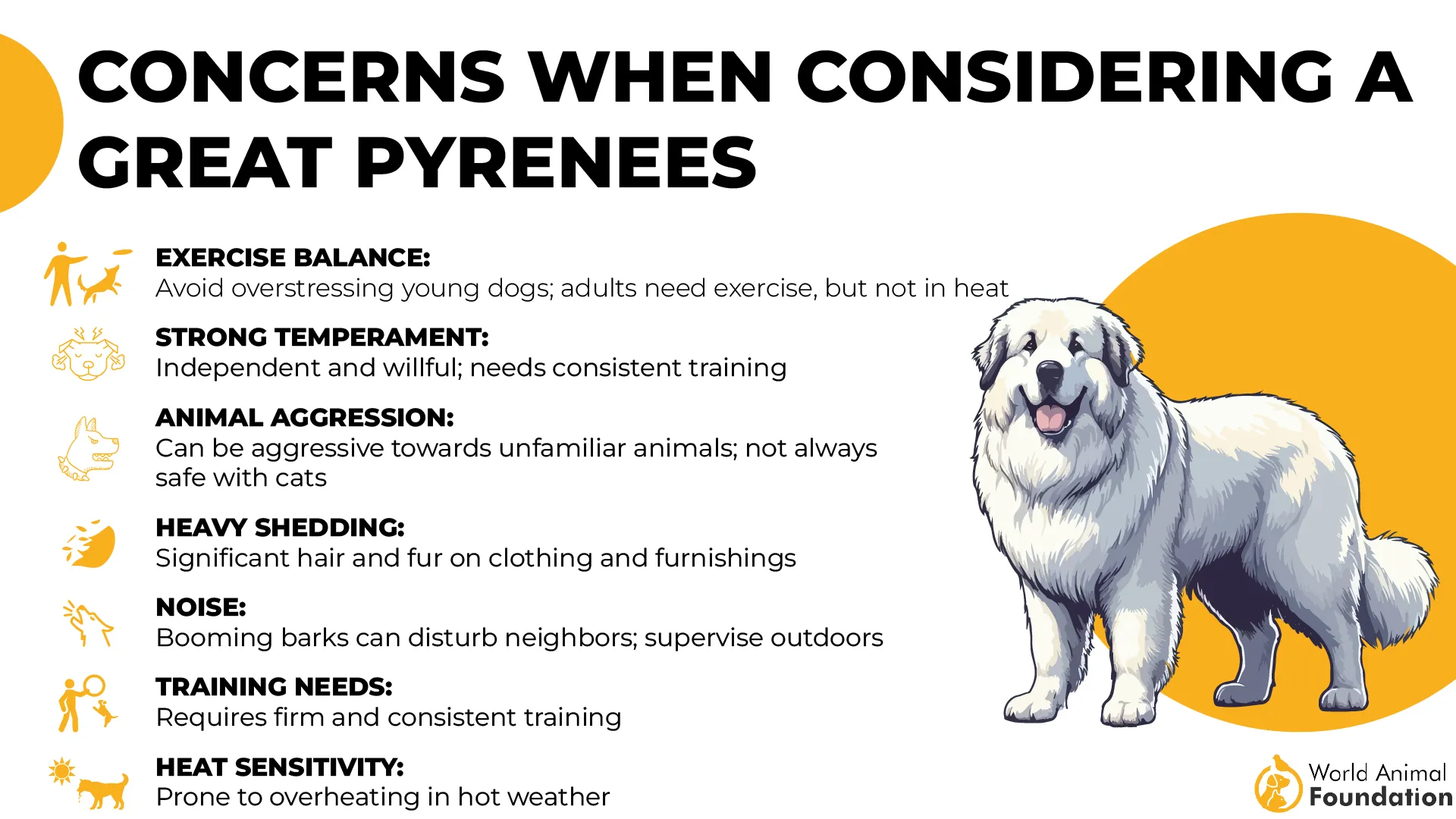
These dogs do well in rural or suburban environments where they have room to roam and observe. Their independent streak means they don’t need constant direction, but consistent training is key, especially with such a strong-willed breed. Their alertness makes them natural watchdogs, but they tend to bark to warn, not to aggress.
They thrive in colder climates, where their insulating coat truly shines. Snowy hikes? Arctic wind? Not a problem. Just remember: their double coat requires regular grooming to prevent matting and tangling. In return, you’ll get a loyal, low-key companion who’s as stunning in the snow as they are steadfast in spirit.
3. Saint Bernard
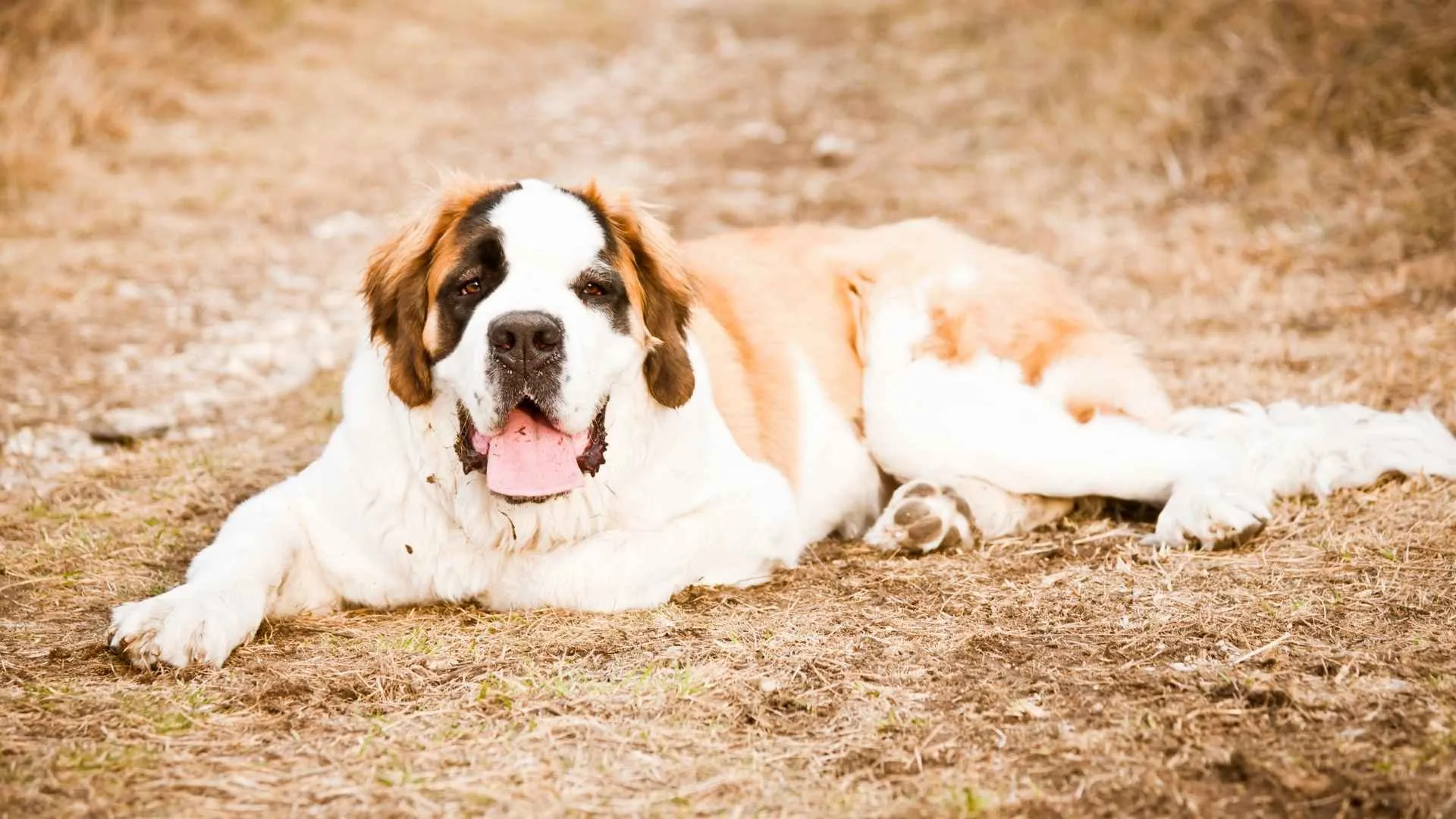
Breed Overview
Group: Working
Height: 26–30 in
Weight: 120–200 lbs
Coat: Dense, smooth, or rough coat; white with red, brindle, or brown markings
Temperament: Gentle, friendly, dependable
Saint Bernards are the best snow dog breed of legend, quite literally. These gentle giants are famed for braving avalanches in the Swiss Alps, rescuing lost travelers with uncanny tracking abilities and unwavering determination. Their massive build and thick coat made them perfect for life in treacherous, freezing landscapes.
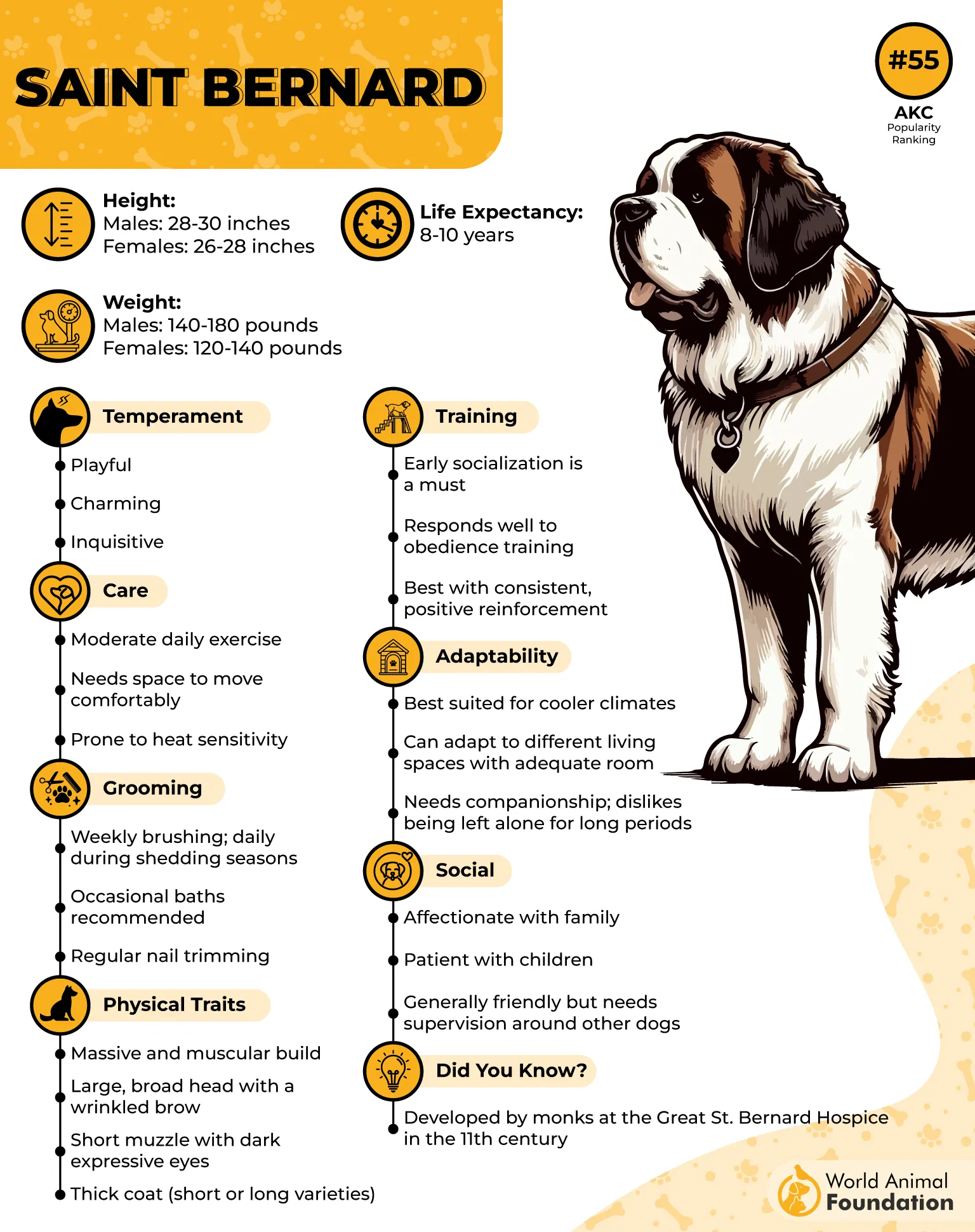
Today’s Saint Bernards retain all the warmth without the avalanche duty. They’re affectionate family pets, known for their sweet temperament and patience with children. Though large, they’re low-energy and happiest when they can lounge near their humans, preferably with a head on your lap and drool on your sleeve.
Cold weather brings out the best in these dogs. They’re most comfortable in frosty environments and love slow walks through the snow, but don’t expect them to sprint or fetch; they’re lovers, not athletes. Their affectionate nature means they form deep connections with their people, making them loyal companions for life.
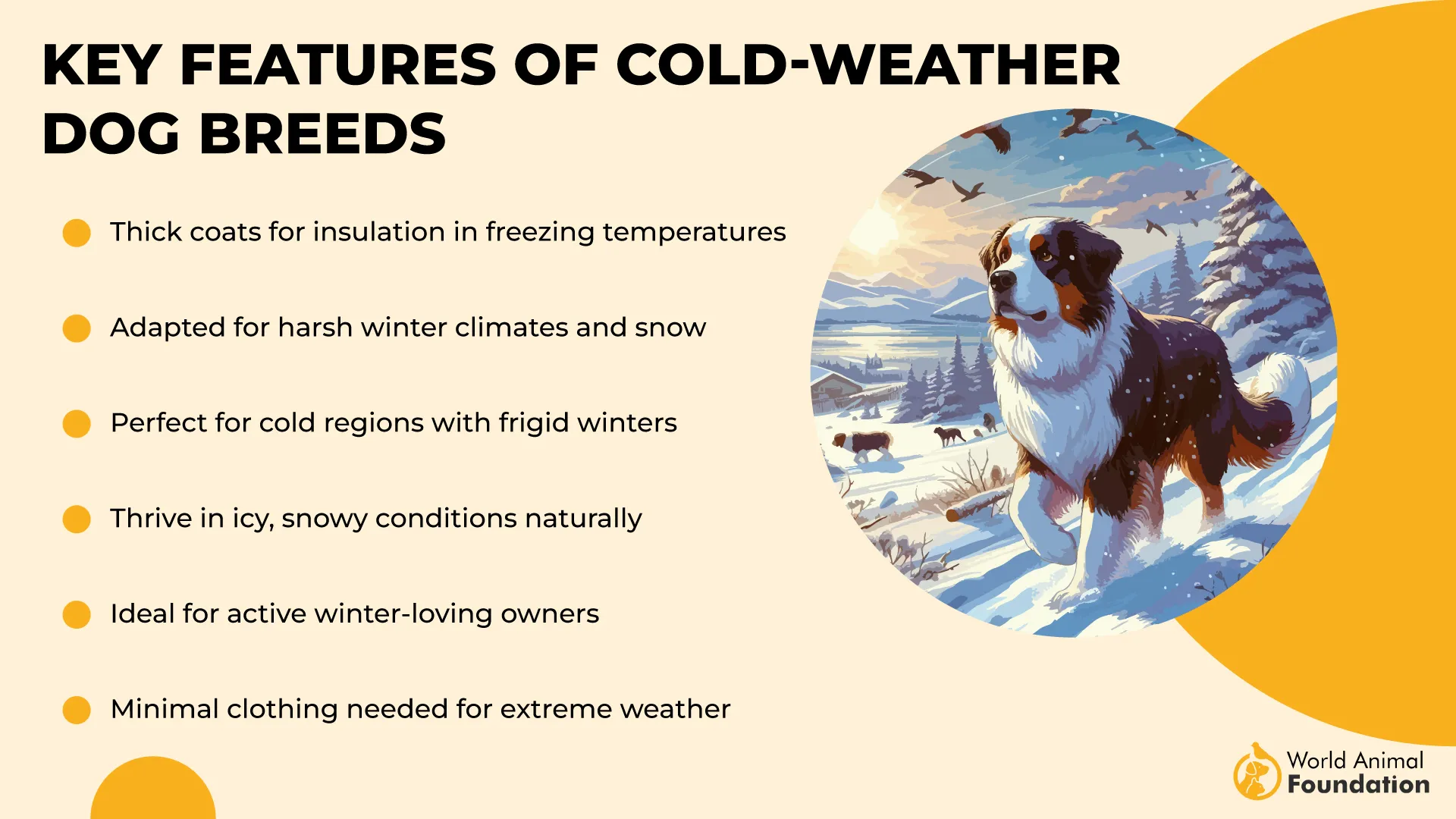
Training and socialization are essential early on due to their size. Their calm demeanor can turn stubborn if not guided properly, but they respond well to kind, consistent leadership. They’re also protective when necessary, but generally friendly even with strangers, after all, they were once trusted with saving lives.
Though they shed and slobber in generous amounts, Saint Bernards offer an unbeatable combo of devotion, gentleness, and cold-weather charm. If you’ve got space and snow, they’ll bring heart and heft to your winter-loving household.
4. Siberian Husky

Breed Overview
Group: Working
Height: 20–23.5 inches
Weight: 35–60 lbs
Coat: Dense double coat; black, white, gray, red, agouti
Temperament: Outgoing, energetic, independent
Siberian Huskies are born snow runners. Developed by the Chukchi people of Northeast Asia to pull sleds across long, frozen distances, these athletic dogs are unmatched in their love for winter landscapes. With striking blue or multicolored eyes and thick, weatherproof coats, they’re built for both speed and beauty in cold temperatures.
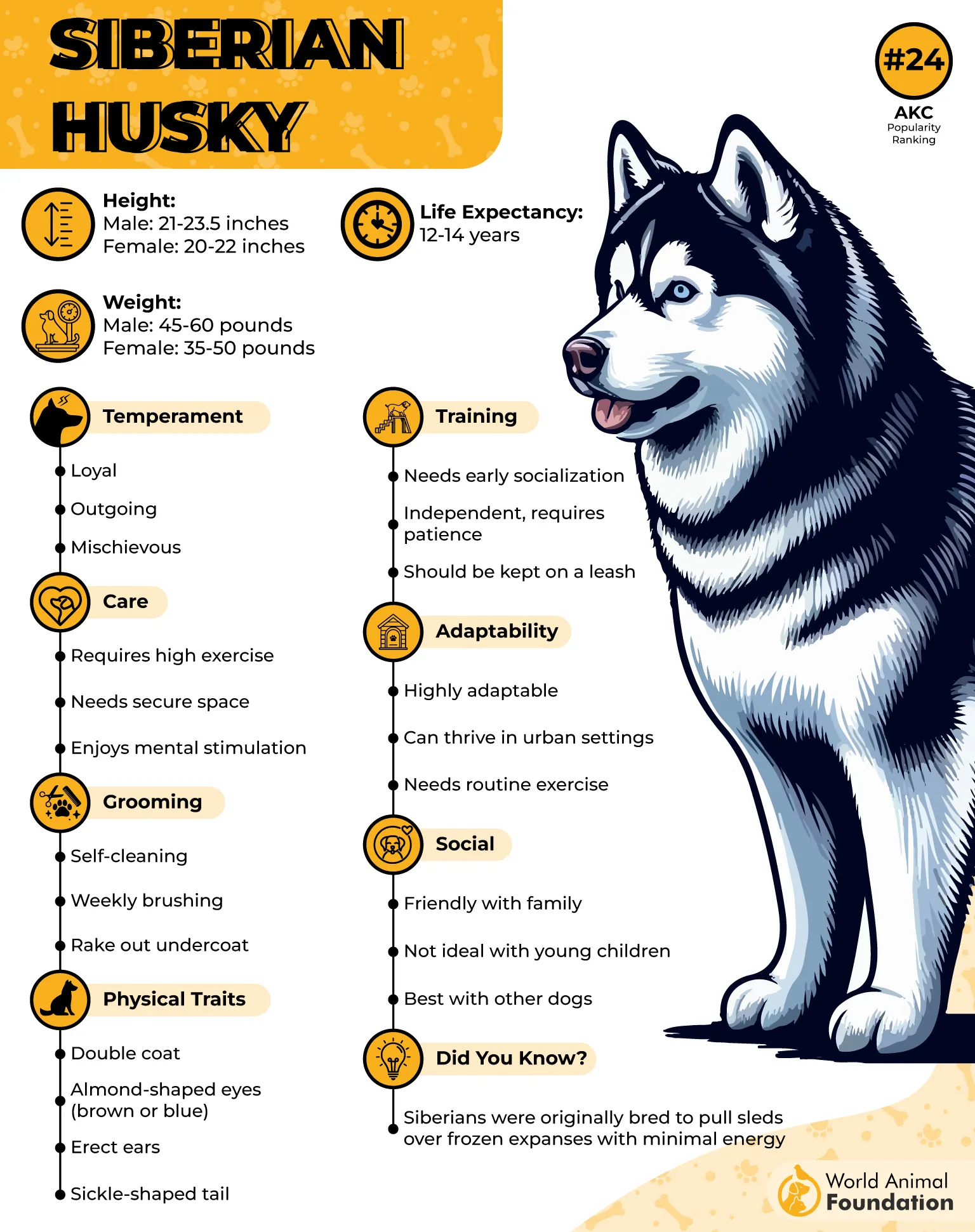
Huskies have a spirited, playful nature that thrives in active households. They’re sociable with people and other dogs, but their strong prey drive and wanderlust require secure fencing and attentive owners. Don’t expect them to be guard dogs; they’re more likely to greet intruders with a tail wag than a bark.
PetMD states that this breed demands regular exercise and mental stimulation. Long walks, runs, and snow games are essential for channeling their energy and preventing destructive behaviors. Huskies are notorious escape artists and mischief-makers if under-stimulated.
Shedding is a seasonal event, twice a year, their dense undercoat “blows out” in spectacular fashion. Regular brushing helps, but be ready to live with fur as a lifestyle. Their vocalizations, from howls to yodels, are just another charming quirk of this snow-loving breed.
5. Samoyed
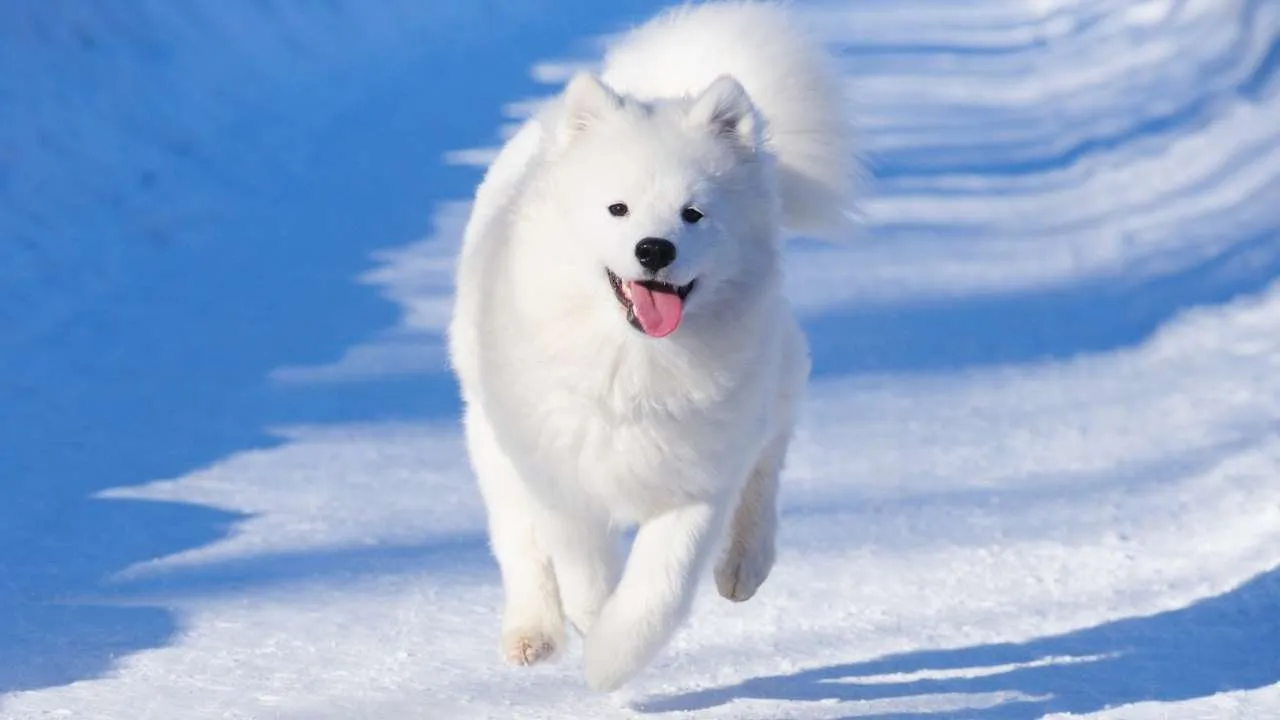
Breed Overview
Group: Working
Height: 19–24 inches
Weight: 35–65 lbs
Coat: Long, thick, fluffy double coat; always white or cream
Temperament: Cheerful, affectionate, social
The Samoyed’s dazzling white coat and signature “Sammy smile” are as endearing as they are functional. Originally bred by the nomadic Samoyedic people of Siberia, these dogs pulled sleds, herded reindeer, and kept their humans warm at night in the Arctic cold. Their plush coat is incredibly insulating, making them perfectly suited for snowy environments.
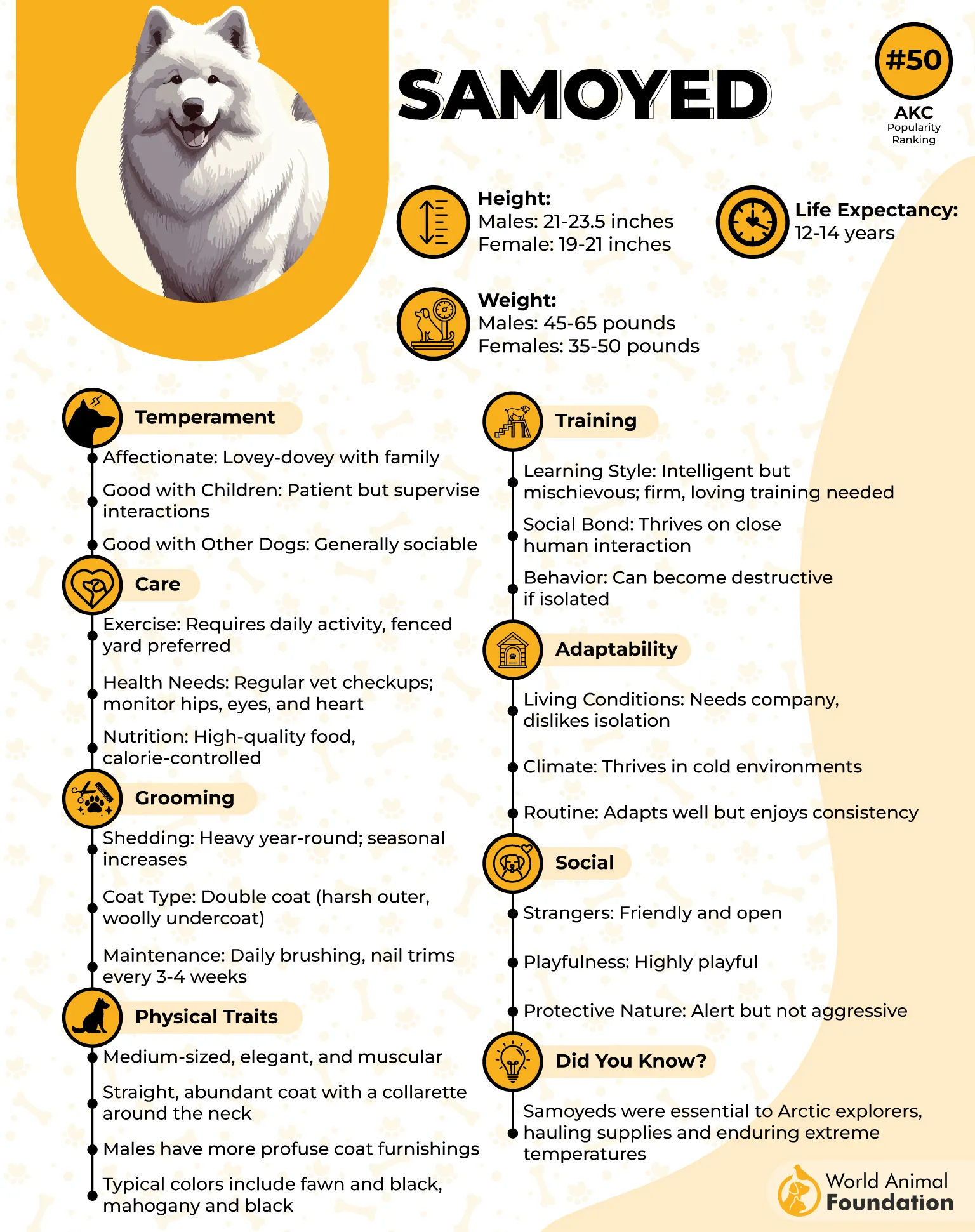
Sociable and gentle, Samoyeds are true people dogs. They thrive on companionship and affection and don’t like being left alone for long periods. Their upbeat personalities make them great with children and other pets, just don’t expect them to be quiet about it.
These fluffy dynamos need both mental and physical stimulation. While not as intense as Huskies in their exercise needs, they still require long walks, outdoor play, and brain games to stay happy and healthy. A bored Samoyed will likely resort to barking or digging snow tunnels in your yard.
Despite their heavy coat, they’re relatively clean dogs with little odor. However, they shed profusely, especially during seasonal transitions. Daily brushing is key to managing their glorious mane and avoiding mats.
6. American Eskimo Dog
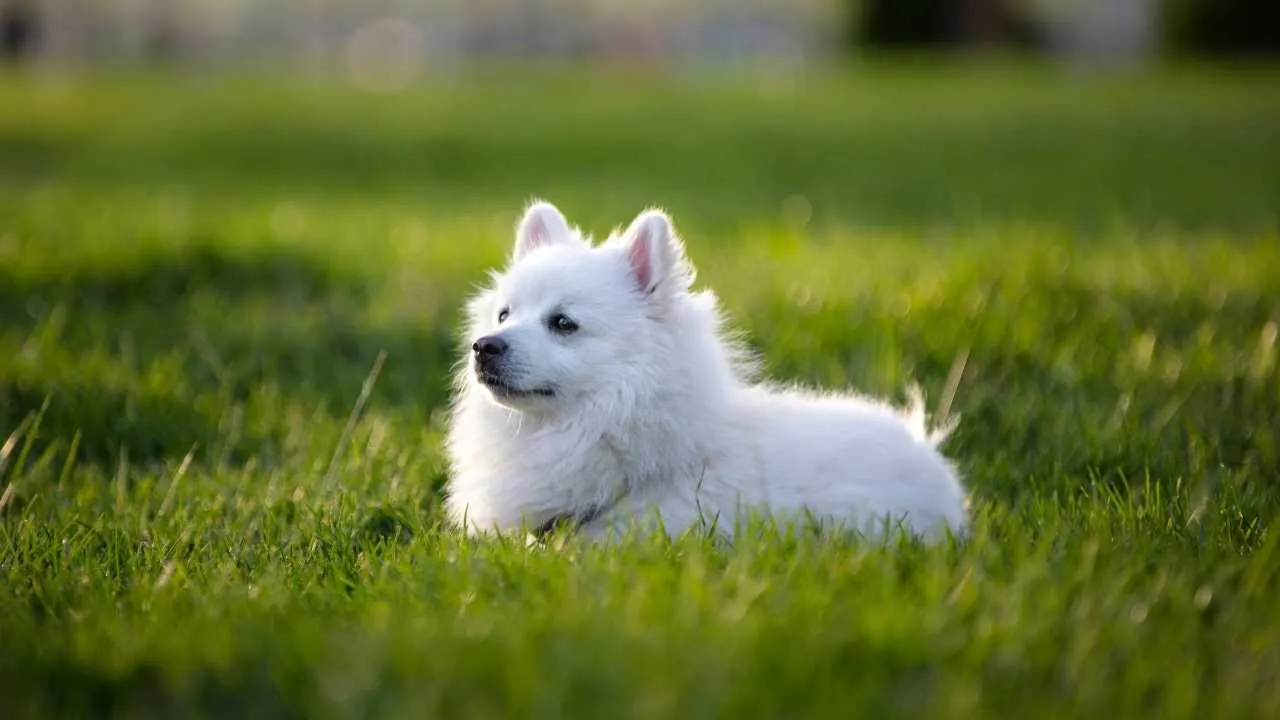
Breed Overview
Group: Non-Sporting
Height: 9–19 inches (toy to standard)
Weight: 6–35 lbs
Coat: Thick, white double coat with ruff around chest
Temperament: Alert, intelligent, friendly
Don’t let the name fool you, the American Eskimo Dog has German roots and no direct connection to indigenous Eskimo cultures. However, with their brilliant white coat, feathered tail, and cold-tolerant nature, they’ve earned their place among the best snow-loving companions.
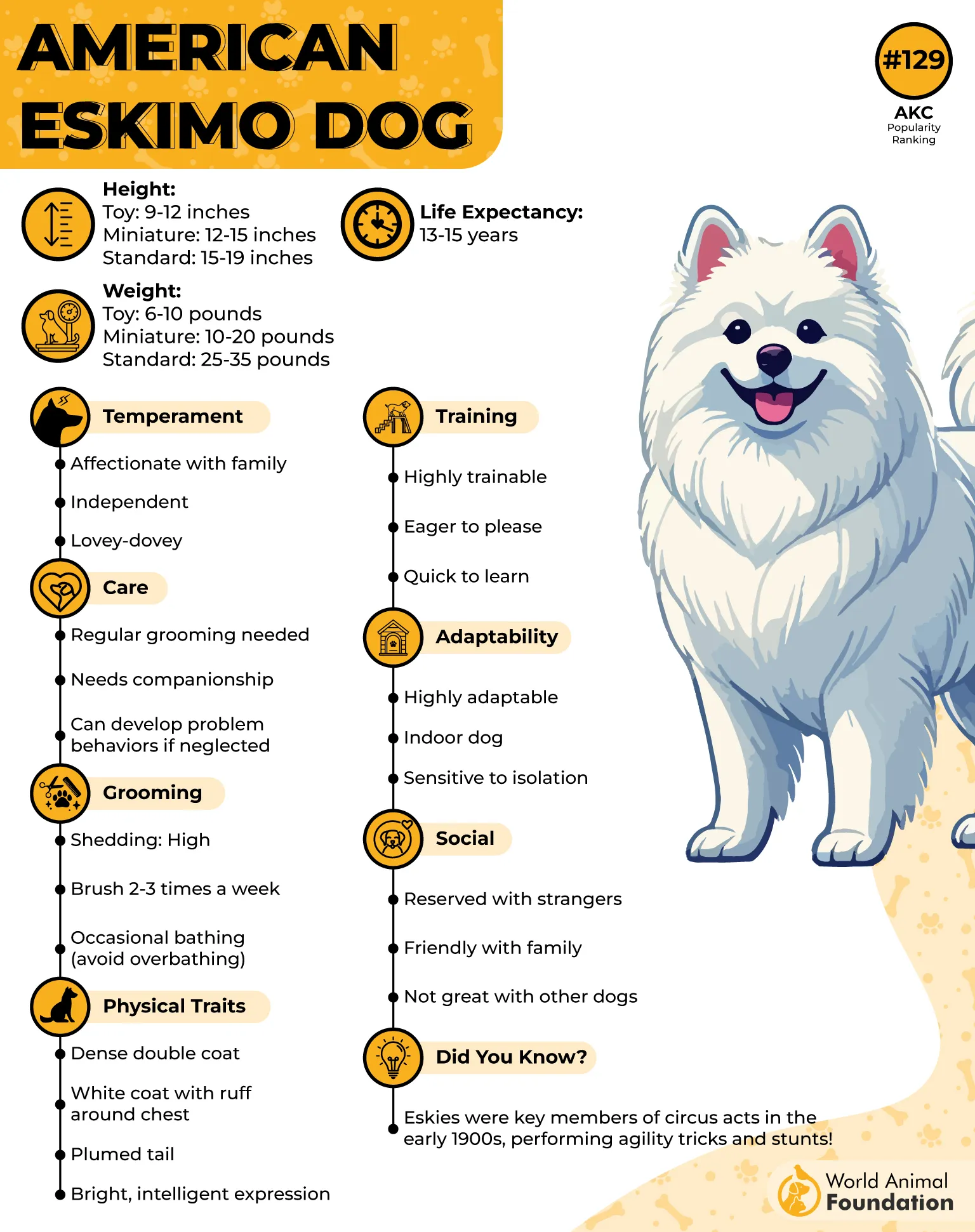
Smart and energetic, these Spitz-type dogs are lively performers who once dazzled crowds in circuses. Today, they remain enthusiastic learners who love tricks, games, and interactive play. Their alert expression and quick wit make them ideal for obedience training and agility courses.
Available in toy, miniature, and standard sizes, Eskies are well-suited for families of many lifestyles. They do best with consistent activity and enjoy both cuddles and spirited romps in the snow. They’re also excellent watchdogs, vocal and attentive without being aggressive.
Regular grooming is necessary to maintain their thick, cloudlike coats. While they don’t shed year-round, expect a heavy seasonal blowout twice a year. With proper care and attention, these fluffy companions are as delightful in winter as they are year-round.
7. Bernese Mountain Dog
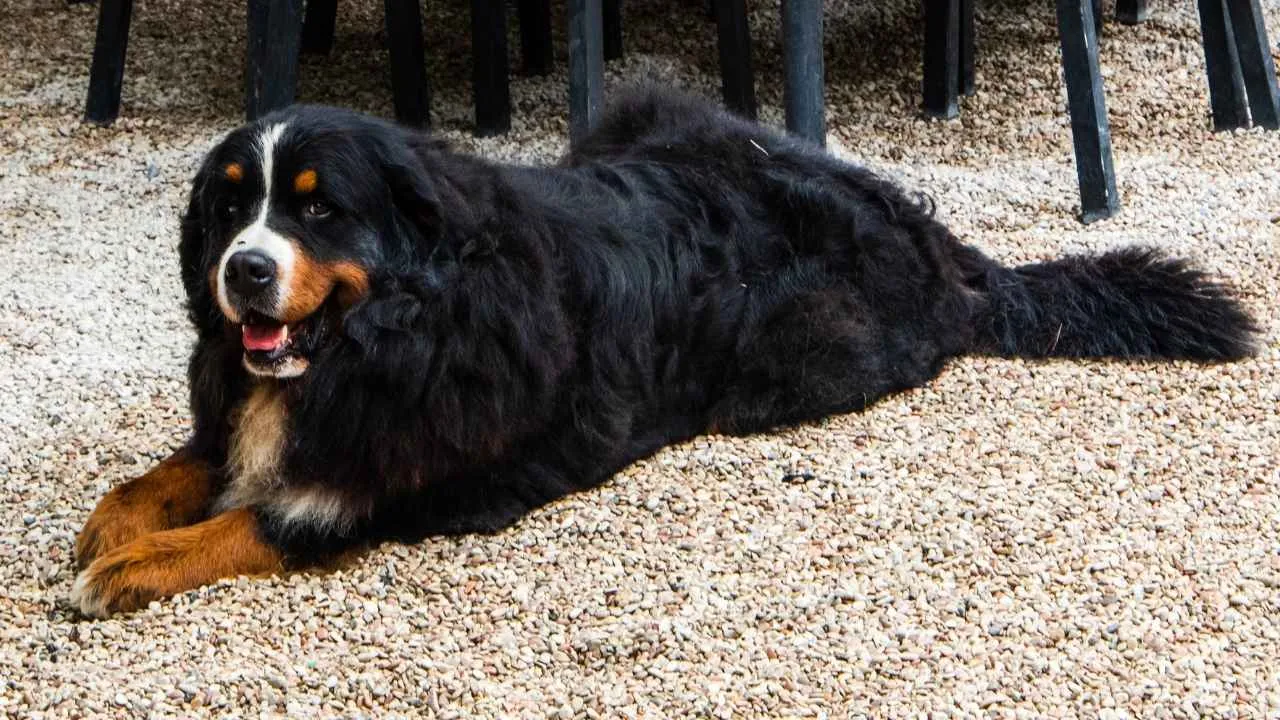
Breed Overview
Group: Working
Height: 23–27.5 inches
Weight: 70–115 lbs
Coat: Long, silky double coat; black with white and rust markings
Temperament: Gentle, loyal, affectionate
Hailing from the snowy Alps of Switzerland, the Bernese Mountain Dog was built for cold and rugged terrain. These dogs once pulled carts and herded cattle in icy mountain villages, and they’ve retained their resilience and calm demeanor through generations.
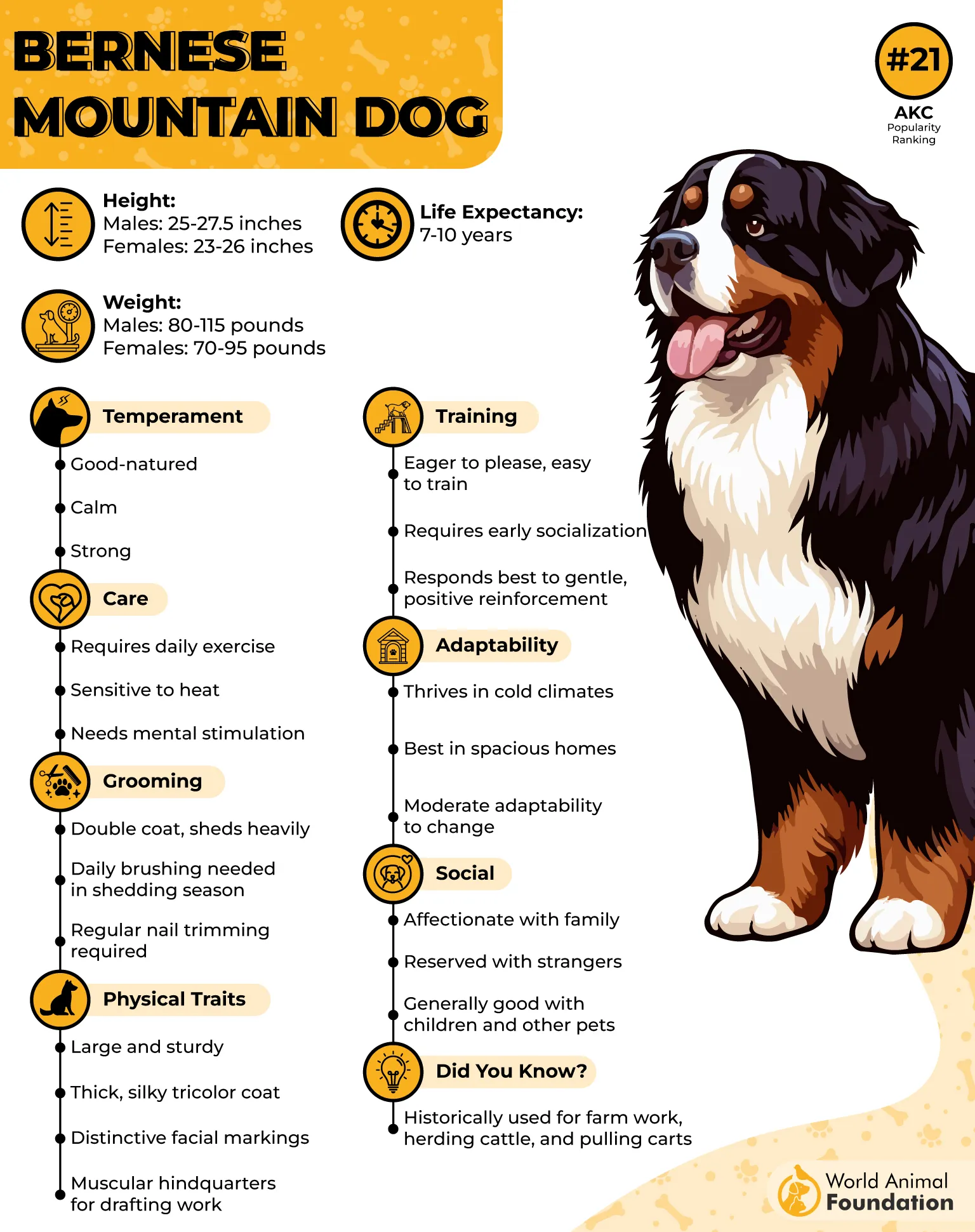
Their lush, tri-colored coat not only keeps them warm but makes them showstoppers in the snow. Berners are known for their loving nature; they bond deeply with their people and are especially gentle with children, making them one of the most beloved family dogs.
Though calm indoors, they do need daily outdoor activity. Britannica states that Berners enjoy hikes, snow play, and brisk walks, but are just as happy relaxing by your side after a fun outing. Their even temperament and eagerness to please make them easy to train and a joy to live with.
Like many large breeds, they are prone to health issues and have a shorter lifespan, typically around 7–10 years. Their coat requires regular brushing, especially in winter when they shed their dense undercoat.
Berners are affectionate companions who adore chilly weather and meaningful connections with their humans. With their big hearts and sturdy builds, they make every snowy day a little warmer.
Conclusion
From the snowy Alps to the icy plains of Siberia, snow dog breeds have stood by humans for centuries. Built for freezing temperatures, deep snow, and hard work like hauling sledges or guarding livestock, these great cold-weather breeds are more than companions; they’re resilient, loyal workers with ancient breed roots.
Their secret? A protective double coat, combining a woolly undercoat with a thick or smooth outer layer, is ideal for insulation. Whether it’s the athletic Siberian Husky, powerful Tibetan Mastiff, or gentle Bernese Mountain Dog, these breeds are equipped with the Nordic traits to handle winter with ease.
Beyond their looks, they’re intelligent, confident dogs that thrive with active families and love to be given purpose. Their history in cold climates has shaped them into strong, affectionate, and dependable pets.
If you’re seeking a pup that can handle low temperatures, keep up in the snow, and offer year-round loyalty, these snow-loving dog breeds are ready to join your winter adventures.


